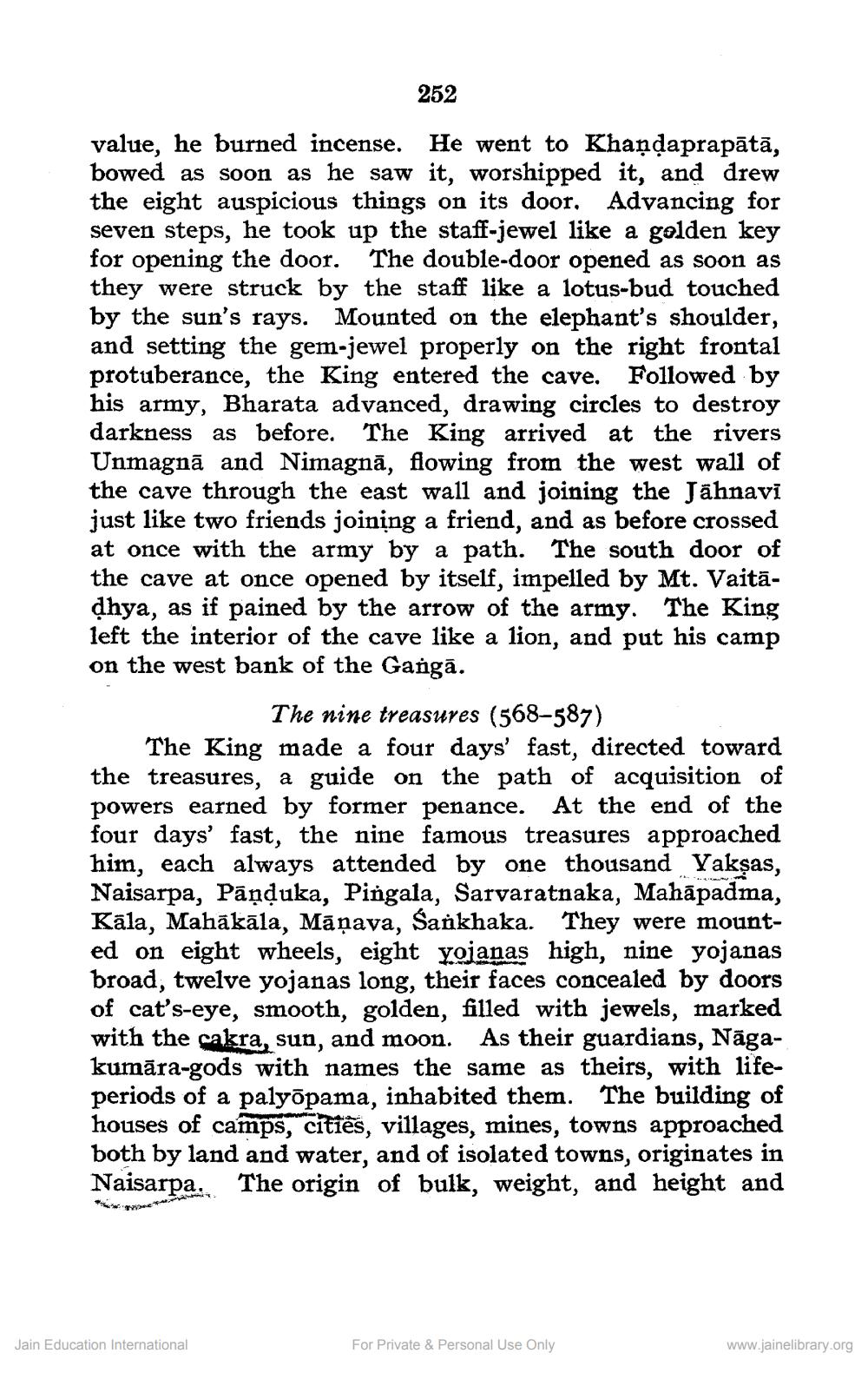________________
252
value, he burned incense. He went to Khaṇḍaprapātā, bowed as soon as he saw it, worshipped it, and drew the eight auspicious things on its door. Advancing for seven steps, he took up the staff-jewel like a golden key for opening the door. The double-door opened as soon as they were struck by the staff like a lotus-bud touched by the sun's rays. Mounted on the elephant's shoulder, and setting the gem-jewel properly on the right frontal protuberance, the King entered the cave. Followed by his army, Bharata advanced, drawing circles to destroy darkness as before. The King arrived at the rivers Unmagna and Nimagna, flowing from the west wall of the cave through the east wall and joining the Jähnavi just like two friends joining a friend, and as before crossed at once with the army by a path. The south door of the cave at once opened by itself, impelled by Mt. Vaitadhya, as if pained by the arrow of the army. The King left the interior of the cave like a lion, and put his camp on the west bank of the Gangā.
The nine treasures (568-587)
The King made a four days' fast, directed toward the treasures, a guide on the path of acquisition of powers earned by former penance. At the end of the four days' fast, the nine famous treasures approached him, each always attended by one thousand Yakṣas, Naisarpa, Paṇḍuka, Pingala, Sarvaratnaka, Mahāpadma, Kāla, Mahākāla, Māṇava, Šankhaka. They were mounted on eight wheels, eight yojanas high, nine yojanas broad, twelve yojanas long, their faces concealed by doors of cat's-eye, smooth, golden, filled with jewels, marked with the cakra, sun, and moon. As their guardians, Nāgakumāra-gods with names the same as theirs, with lifeperiods of a palyōpama, inhabited them. The building of houses of camps, cities, villages, mines, towns approached both by land and water, and of isolated towns, originates in Naisarpa. The origin of bulk, weight, and height and
Jain Education International
For Private & Personal Use Only
www.jainelibrary.org




